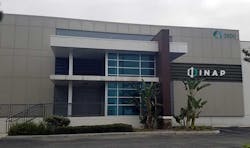Colocation provider INAP (Internap Corporation) has completed a financial restructuring and emerged from bankruptcy, the company said today. INAP filed for filed for Chapter 11 bankruptcy on March 16, citing the need to strengthen its capital structure after failing to find a buyer or strategic partner.
INAP negotiated a “prepackaged” bankruptcy with its lenders, allowing it to complete its reorganization in just seven weeks. INAP emerges as a private company, having completed a comprehensive debt-for-equity restructuring transaction. To improve its liquidity, the company also closed a new five-year $225 million term loan facility, as well as a three-year $75 million exit facility. Vendors and most other unsecured creditors will be paid, and INAP is retaining its leases of third-party data center space.
The reorganized INAP will be led by new CEO Michael Sicoli, who had been the company’s President and Chief Financial Officer. Sicoli succeeds Peter Aquino, who had led the company since 2016.
“Today marks the start of a new, exciting chapter for INAP,” Aquino said. “When we began the restructuring process, we did so with a clear objective of strengthening our capital structure and best positioning INAP for long-term growth and success,” said Aquino, outgoing INAP Chairman and Chief Executive Officer. “Our ability to achieve this goal and emerge from Chapter 11 as quickly as we did is a testament to our incredibly talented team and the strong relationships we have cultivated with our customers and partners. I want to thank our lenders for working with us on this consensual restructuring plan.”
INAP operates in 21 markets around the world, offering high-density colocation, managed cloud hosting and powerful network services. INAP has more than 1 million square feet of data centers, including about 600,000 square feet of technical data center space.
Chapter 11 provides relief from creditors while a company reorganizes its finances, with the bankruptcy court overseeing and approving its operations as it restructures. INAP had been exploring strategic alternatives for some time, but on March 16 said it had agreed to a restructuring with a lending group holding 77 percent of its debt.
Sicoli said the restructuring improved INAP’s finances and creditworthiness. “With our new capital structure in place, we are stronger than ever and poised to grow by delivering the most compelling combination of colocation, cloud and network services in the industry,” said Sicoli.
In a court filing, Sicoli said that the restructuring ” is the result of extensive good faith negotiations between the debtors and their key stakeholders, and represents a comprehensive and value-maximizing restructuring for the benefit of all creditors,” noting that 98 percent of lenders voted in favor of the plan, which was approved by the bankruptcy court on May 4.
INAP had been publicly traded on the NASDAQ, and owners of INAP shares saw most of the value of their holdings wiped out by the bankruptcy filing. Owners of INAP common shares can apply for “new common equity warrants.” Court documents don’t provide a clear sense of the value of these warrants, but shares of INAP are currently trading at 9 cents, down from $1 at the start of 2020. The stock had traded at $18 a share as recently as 2017, with an all-time high of $82 in 2007.
Sicoli also noted that although there are uncertainties and “downside risk” from the COVID-19 pandemic, INAP has not experienced any significant disruption to its business. “Demand for (INAP’s) services has remained strong as companies around the world have relied on IT infrastructure and Internet connectivity more than ever for communications and commerce.”






